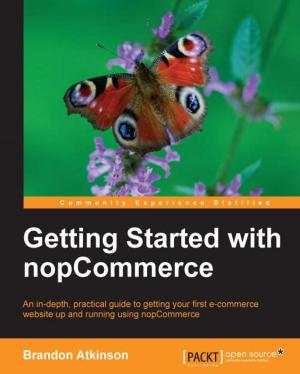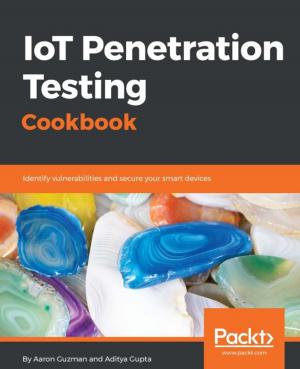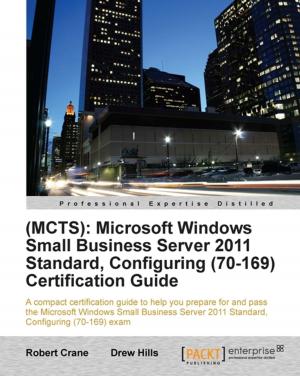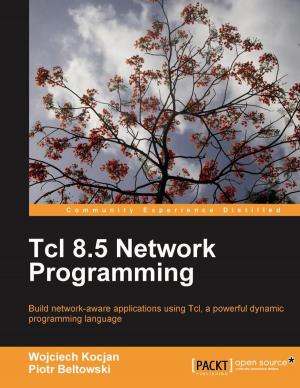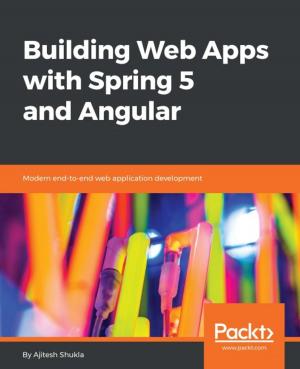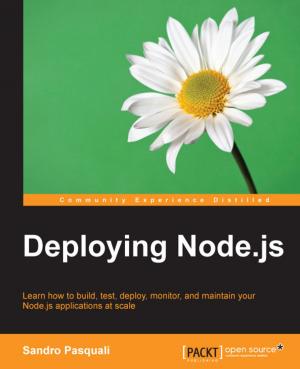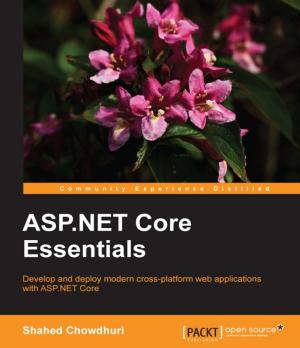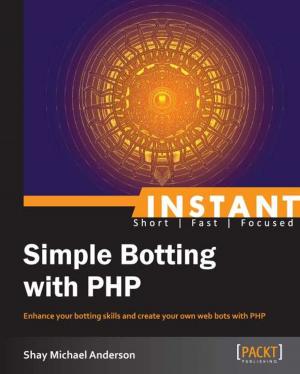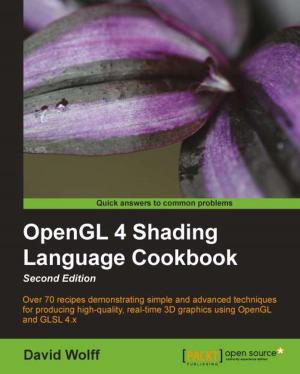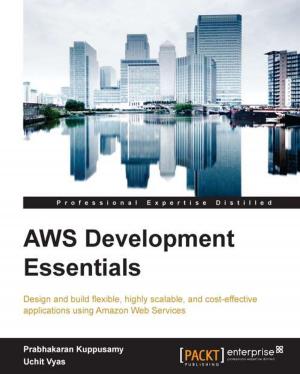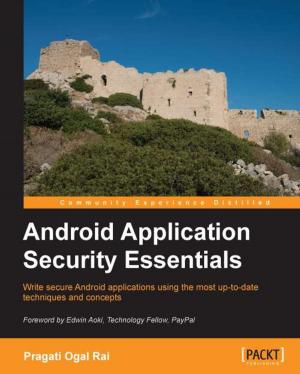IoT: Building Arduino-Based Projects
Nonfiction, Computers, Computer Hardware, Input-Output Equipment, Programming, Software Development| Author: | Peter Waher, Pradeeka Seneviratne, Brian Russell, Drew Van Duren | ISBN: | 9781787126374 |
| Publisher: | Packt Publishing | Publication: | August 31, 2016 |
| Imprint: | Packt Publishing | Language: | English |
| Author: | Peter Waher, Pradeeka Seneviratne, Brian Russell, Drew Van Duren |
| ISBN: | 9781787126374 |
| Publisher: | Packt Publishing |
| Publication: | August 31, 2016 |
| Imprint: | Packt Publishing |
| Language: | English |
Explore and learn about Internet of Things to develop interactive Arduino-based Internet projects
About This Book
- Learn the capabilities and differences between popular protocols and communication patterns and how they can be used, and should not be used, to create secure and interoperable services and things
- Build Internet-based Arduino devices to make your home feel more secure
- Learn to protect cyber-physical systems and utilize forensic data analysis to beat vulnerabilities in your IoT ecosystem
- Learn best practices to secure your data from device to the cloud
Who This Book Is For
If you're a developer or electronics engineer who is curious about Internet of Things, then this is the course for you. A rudimentary understanding of electronics, Raspberry Pi, or similar credit-card sized computers, and some programming experience using managed code such as C# or Java will be helpful. Business analysts and managers will also find this course useful.
What You Will Learn
- Know the capabilities and limitations of the HTTP, UPnP, CoAP, MQTT, and XMPP protocols
- Use important communication patterns, such as the request/respond, publish/subscribe, event subscription, asynchronous messaging, and multicasting patterns
- Build a portable Wi-Fi signal strength sensor to give haptic feedback about signal strength to the user
- Measure the water flow speed and volume with liquid flow sensors and record real-time readings
- Secure your home with motion-activated Arduino security cameras and upload images to the cloud
- Implement real-time data logging of a solar panel voltage with Arduino cloud connectors
- Track locations with GPS and upload location data to the cloud
- Control infrared-enabled devices with IR remote and Arduino
- Use Systems Security Engineering and Privacy-by-design principles to design a secure IoT ecosystem
In Detail
The IoT: Building Arduino-Based Projects course will take you on a journey to become an expert in the use of IoT by developing a set of projects and finally guide you onto securing your IoT environment.
The course begins with exploring the popular HTTP, UPnP, CoAP, MQTT, and XMPP protocols. In the first module Learning Internet of Things, you will learn how protocols and patterns can put limitations on network topology and how they affect the direction of communication and the use of firewalls. This module gives you a practical overview of the existing protocols, communication patterns, architectures, and security issues important to Internet of Things.
The second module, Internet of Things with Arduino Blueprints provides you up to eight projects that will allow devices to communicate with each other, access information over the Internet, store and retrieve data, and interact with users?creating smart, pervasive, and always-connected environments. You can use these projects as blueprints for many other IoT projects and put them to good use.
It has becomes critical to ensure that cyber security threats are contained to a minimum when implementing new IoT services and solutions. Thus, our third module, Practical Internet of Things Security provides a set of guidelines to architect and deploy a secure IoT in your Enterprise. The aim is to showcase how the IoT is implemented in early adopting industries and describe how lessons can be learned and shared across diverse industries to support a secure IoT.
Style and approach
This course introduces you to the Internet of Things architecture, helps you build Arduino projects based on IoT and cloud computing concepts, create smart, pervasive and always-connected environments, and finally guide you onto securing your IoT environment. Each of these has been covered in individual modules so that you develop your skill after the completion of a module and get ready for the next
Explore and learn about Internet of Things to develop interactive Arduino-based Internet projects
About This Book
- Learn the capabilities and differences between popular protocols and communication patterns and how they can be used, and should not be used, to create secure and interoperable services and things
- Build Internet-based Arduino devices to make your home feel more secure
- Learn to protect cyber-physical systems and utilize forensic data analysis to beat vulnerabilities in your IoT ecosystem
- Learn best practices to secure your data from device to the cloud
Who This Book Is For
If you're a developer or electronics engineer who is curious about Internet of Things, then this is the course for you. A rudimentary understanding of electronics, Raspberry Pi, or similar credit-card sized computers, and some programming experience using managed code such as C# or Java will be helpful. Business analysts and managers will also find this course useful.
What You Will Learn
- Know the capabilities and limitations of the HTTP, UPnP, CoAP, MQTT, and XMPP protocols
- Use important communication patterns, such as the request/respond, publish/subscribe, event subscription, asynchronous messaging, and multicasting patterns
- Build a portable Wi-Fi signal strength sensor to give haptic feedback about signal strength to the user
- Measure the water flow speed and volume with liquid flow sensors and record real-time readings
- Secure your home with motion-activated Arduino security cameras and upload images to the cloud
- Implement real-time data logging of a solar panel voltage with Arduino cloud connectors
- Track locations with GPS and upload location data to the cloud
- Control infrared-enabled devices with IR remote and Arduino
- Use Systems Security Engineering and Privacy-by-design principles to design a secure IoT ecosystem
In Detail
The IoT: Building Arduino-Based Projects course will take you on a journey to become an expert in the use of IoT by developing a set of projects and finally guide you onto securing your IoT environment.
The course begins with exploring the popular HTTP, UPnP, CoAP, MQTT, and XMPP protocols. In the first module Learning Internet of Things, you will learn how protocols and patterns can put limitations on network topology and how they affect the direction of communication and the use of firewalls. This module gives you a practical overview of the existing protocols, communication patterns, architectures, and security issues important to Internet of Things.
The second module, Internet of Things with Arduino Blueprints provides you up to eight projects that will allow devices to communicate with each other, access information over the Internet, store and retrieve data, and interact with users?creating smart, pervasive, and always-connected environments. You can use these projects as blueprints for many other IoT projects and put them to good use.
It has becomes critical to ensure that cyber security threats are contained to a minimum when implementing new IoT services and solutions. Thus, our third module, Practical Internet of Things Security provides a set of guidelines to architect and deploy a secure IoT in your Enterprise. The aim is to showcase how the IoT is implemented in early adopting industries and describe how lessons can be learned and shared across diverse industries to support a secure IoT.
Style and approach
This course introduces you to the Internet of Things architecture, helps you build Arduino projects based on IoT and cloud computing concepts, create smart, pervasive and always-connected environments, and finally guide you onto securing your IoT environment. Each of these has been covered in individual modules so that you develop your skill after the completion of a module and get ready for the next



